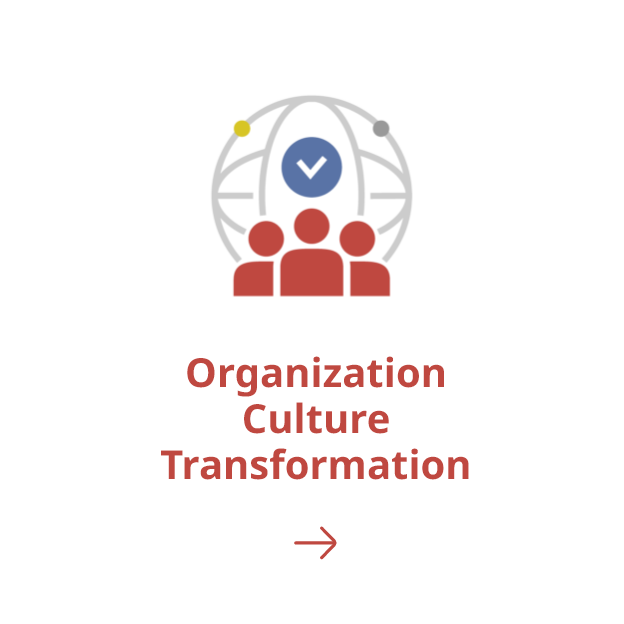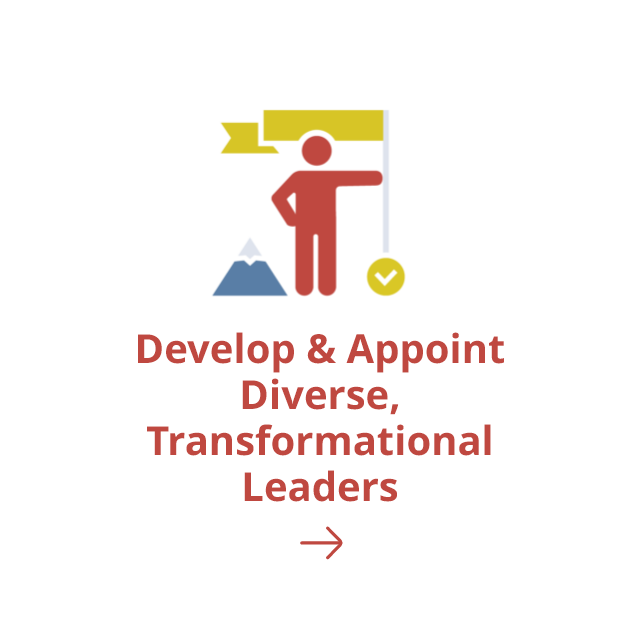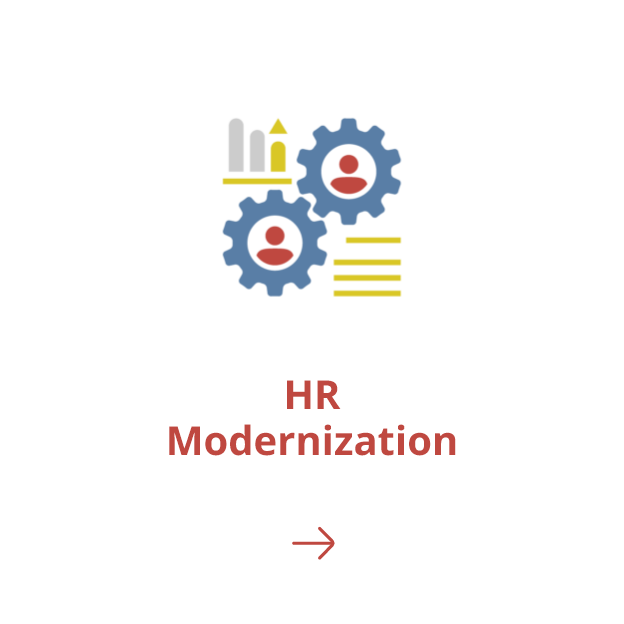To become a company where every employee can “UNLOCK” their potential and maximize their skills and abilities, we are implementing the following initiatives: “Organization Culture Transformation,” “Develop & Appoint Diverse, Transformational Leaders,” and “HR Modernization.” On this page, we share basic data related to the promotion of these initiatives, as well as information on personnel, diversity, and work styles. For details on “Safe, Secure, and Healthy Work Environment,” please visit the sustainability web page.
*Definition of terms used on this page:
- Japanese Region: Unless otherwise noted, the information disclosed from April 2024 onward pertains to the following eight companies: Panasonic Holdings Corporation, Panasonic Corporation, Panasonic Entertainment & Communication Co., Ltd., Panasonic Housing Solutions Co., Ltd., Panasonic Connect Co., Ltd., Panasonic Industry Co., Ltd., Panasonic Energy Co., Ltd., and Panasonic Operational Excellence Co., Ltd. From April 2022 to March 2024, Panasonic Automotive Systems Co., Ltd. was also included. Prior to that period, the scope was limited to Panasonic Corporation and certain affiliated companies in the Japan region, reflecting our business structure before the transition to an operating company system.
- The term “employees” is used here to refer to both employees with no fixed term of employment and fixed-term employees.
- Figures for Japan region: Unless otherwise indicated, these figures refer to employees with no fixed term of employment and fixed-term employees.
1. Organization Culture Transformation
■ Vision :
Toward a state where every employee can boldly and positively take on challenges by maximizing their skills and abilities
■ Critical Indicator :
UNLOCK Indicator (For both Japan and global regions)
Target :
70 % FY 2031
60 % FY 2028
Currently :
43 % (FY 2025, On a consolidated global basis)
32 % (FY 2025, Japan region)
- The UNLOCK indicator is the percentage of favorable responses to both of the following questions in the Employee Opinion Survey: “Enough encouragement is provided by the company or supervisors,” and “There are no significant barriers to taking on challenges. ”The UNLOCK indicator is the percentage of favorable responses to both of the following questions in the Employee Opinion Survey: “Enough encouragement is provided by the company or supervisors,” and “No significant barriers to take on challenges.”
- For details on the UNLOCK indicators, please visit “To Unlock Each and Every Employee.” For information on why we established the UNLOCK indicators, please visit “Challenges We Face – Why UNLOCK Now?”
■ Relevant Data :
Internal open recruitment (Japan region)

- The figures above represent the total of the following: the numbers from each operating company’s system and those from the Groupwide systems (e-Challenge and e-Appeal Challenge).
- Open recruitment systems specific to each operating company have been introduced at Panasonic Industry Co., Ltd., Panasonic Connect Co., Ltd., and Panasonic Housing Solutions Co., Ltd. When applicants meet the requirements, they can apply for positions of responsibility, such as general manager, manager, or other higher-level roles.
- To support employees in taking on new challenges in their work, the Panasonic Group offers shared programs such as Side Job for external work, as well as Multiple Internal Roles. The latter allows employees to contribute to other departments while continuing their current roles.
Development of Human Resources Capable of Using Data Technology

On-Site PX Contest
The number of Applications : 803
The number of Winners : 1,112
FY 2025 (Two contests in total)

Cases Supported by PX Ambassadors
The number of Ambassadors : 62
The number of cases supported by Ambassadors : 170
The figures in FY 2025
- For details of the PX Ambassador system, and PX contests at each site, please visit “The 6 Principles of Organization Design.”
2. Develop & Appoint Diverse, Transformational Leaders
■ Vision :
High-quality decision-making by diverse transformational leaders
■ Critical Indicator 1 :
Diversity rate of the management team*
*Diversity in Executive Officers of Panasonic Holdings Corporation (female employees, employees who are non-Japanese citizens, and mid-career hires)
Target :
More than half (April 2031)
More than half (April 2028)
Currently :
54 % (As of April 1st, 2025)
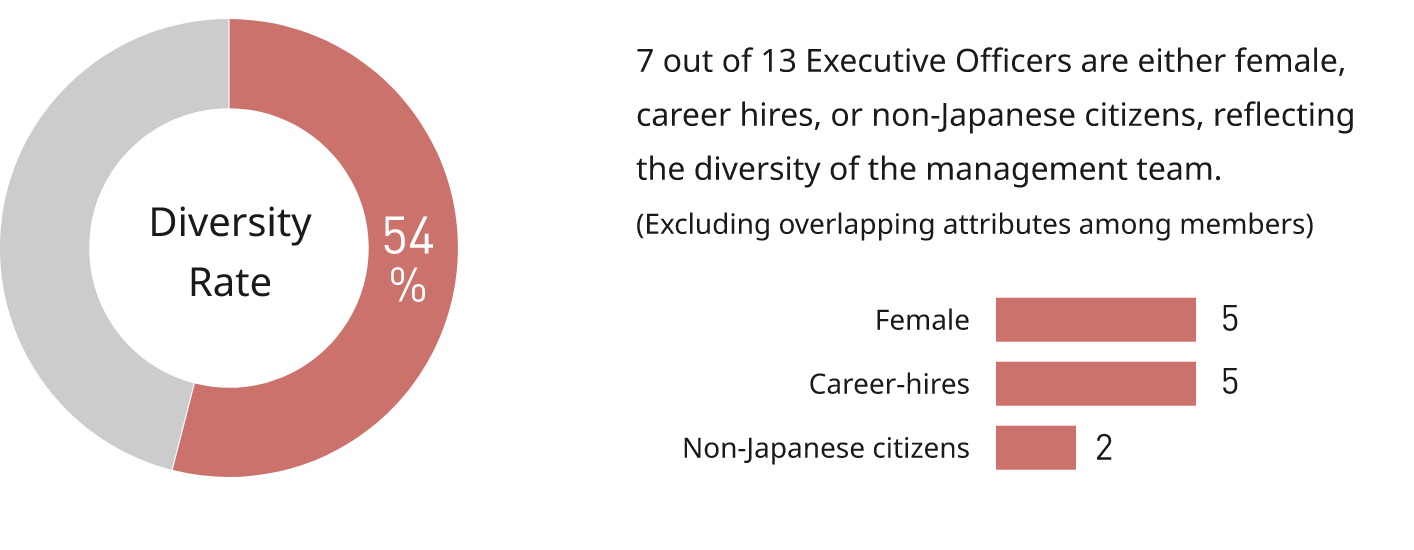
■ Critical Indicator 2 :
Ratio of Female Managers* (Japan region)
Target :
16 % or greater (April 2031)
12 % or greater (April 2028)
Currently :
7.9 % (As of April 1,2025)
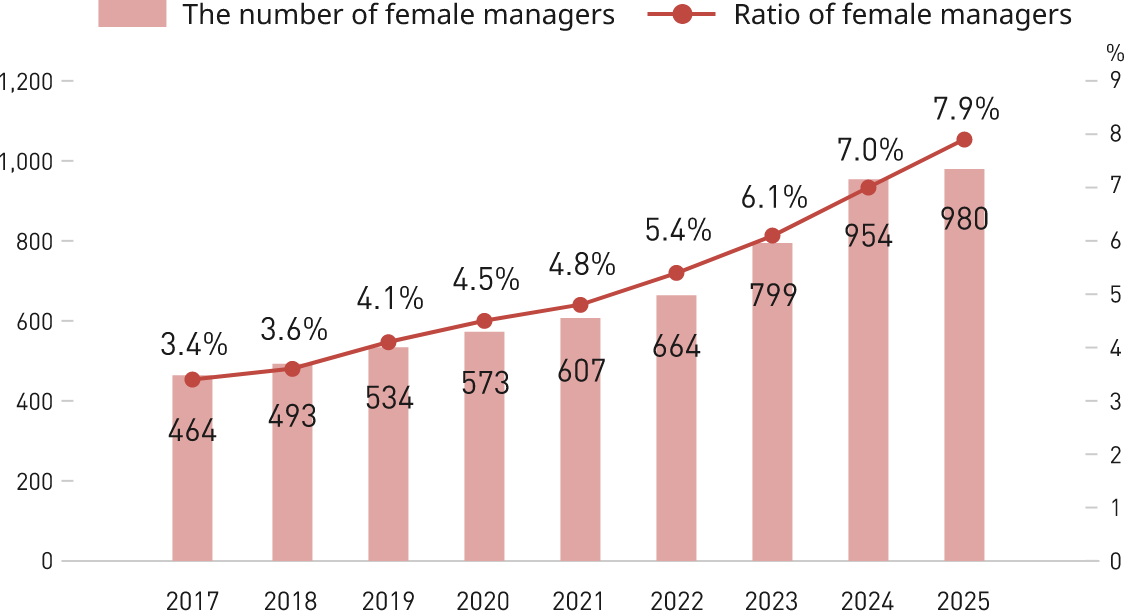
*The figures above refer to employees with no fixed-term employment.
*The figures of 2024 above include those of Panasonic Automotive Systems Co., Ltd.
- For background information emphasizing the diversity rate of the management team and the ratio of female managers, please refer to “Develop & Appoint Transformational Leaders.”
- For our ideas and initiatives on gender equity, please refer to “Support for Every Individual: Gender Equity.”
■ Relevant Data :
Status of Succession Readiness

- The number of successors refers to human resources who can be appointed immediately or within 5 to 10 years, selected from among the candidates for Executive Officers of Panasonic Holdings Corporation and Presidents of operating companies or division companies.
- For details on the successor nurturing process, please refer to “Develop & Appoint Transformational Leaders.”
Gender gap in compensation* (Japan region)

*Calculated based on salaries and bonuses.
- The compensation system does not include any disparities based on gender, gender identity, or other personal attributes. The gender gap in compensation is not believed to result from the compensation structure or system itself, but rather from factors such as differences in the grade system. Accordingly, we will strive to promote diversity that is not defined by characteristics such as gender.
- For details on our ideas and initiatives for gender equity, please refer to “Support for Every Individual: Gender Equity.”
3. HR Modernization
■ Vision :
Enhancing the employee experience through highly productive HR management utilizing AI
■ Relevant Data :
Utilization of One-Stop HR Service Customized for Employees (Japan region)

Users :
18,614 users/month (FY 2025)
The number of utilizations :
44,148 times/month (FY 2025)
- The figures above are calculated based on the number of log-in IDs and log-ins to “My Pages” of the service site.
- For details on the One-Stop HR Service, please refer to “HR Modernization.”
Utilization of AI Career Supporter for Job Seekers (Japan region)

Users :
2,735 total number of people
The number of utilizations :
3,169 total number of times
- The figures above represent the total from May 2024 through June 2025.
- AI Career Supporter is an AI-powered information tool designed to support students’ early career choices. For details, please refer to “HR Modernization.”
Productivity in HR Function (Japan region)

The number of employees managed by 1 FTE* HR employee in the Japan region
Target :
63 (FY 2031)
Currently :
44 (FY 2025)
*Full-Time Equivalent (FTE) is a measure of workload expressed as the equivalent number of full-time employees.

The ratio of HR employees in charge of special tasks or those related to strategies*
Target :
65 % (The level of leading global companies)
Currently :
42 % (FY 2025)
*Among all the tasks of HR employees, the ratio of those related to HR strategy, and the development of talents/organization.
- For details on productivity enhancements in the HR function, please refer to “HR Modernization.”
4. Basic Information
(Human Resources/Diversity/Work Styles)
Human Resources

Number of employees (Global):
207,548
207,548
As of March 31, 2025
By region (Global)

As of March 31, 2025
By job type (Japan region)

As of March 31, 2025
By gender (Japan region)

As of April 1, 2025
By age group (Japan region)

As of April 1, 2025
Number of persons recruited (Japan region)

FY 2025
Turnover rate* (Japan region)

As of March 31, 2025
*The number of those leaving the Group per year divided by the annual average number of employees (employees with no fixed term of employment)
Diversity and Work Styles
Managerial positions (Japan region)

As of April 1 in each year
*The figures of 2024 include those of Panasonic Automotive Systems Co., Ltd.
Employment of people with disabilities* (Japan region)

As of June 1 in each year
*The figures of 2024 include those of Panasonic Automotive Systems Co., Ltd.
- We have achieved an employment rate that exceeds the legally required employment rate of people with disabilities.
- We continue to promote the creation of workplaces where every employee, regardless of physical or mental condition, can take on challenges and play an active role. For details, please refer to “Support for Every Individual: People with Disabilities.”
Work styles (Japan region)

As of April 2025
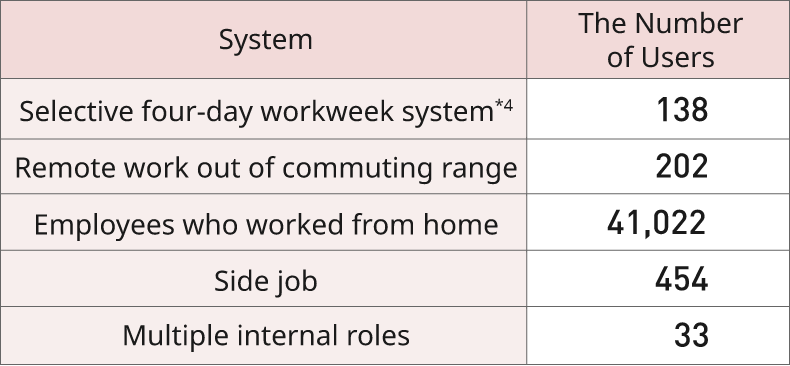
FY 2025
*1: The internal system is called the Work and Life Support System.
*2: Employees who have adopted a flexible work arrangement.
*3: Employees who work remotely at least half of the days in a given month.
*4: Employees who have used the four-day workweek system at least once during the fiscal year.
- We provide a work environment with a variety of work style options to help each individual maximize their strengths.
- For details, please refer to “Support for Every Individual: Diverse Work Styles and Work-Life Balance” and “Examples of Diverse Work Styles.”
Childcare leave (Japan region)
Men’s days/rate* taken

Women’s days/rate* taken

*The percentage is calculated by dividing the total number of employees who took childcare leave or used leave systems for caring for preschool children during the relevant fiscal year by the number of employees who, or whose spouses, gave birth in the same fiscal year (employees with no fixedterm employment).
*The percentage can exceed 100% if a parent starts taking childcare leave in the relevant fiscal year for a child born in the previous fiscal year.
- Various systems are in place to help employees balance career development with life events such as childbirth and childcare.
- We are working to raise awareness within the company so that employees can use these systems when necessary.
- For details, please visit “Support for Every Individual: Diverse Work Styles and Work-Life Balance” and “Examples of Diverse Work Styles.”
Number of days and rate* of annual paid leave taken (Japan region)
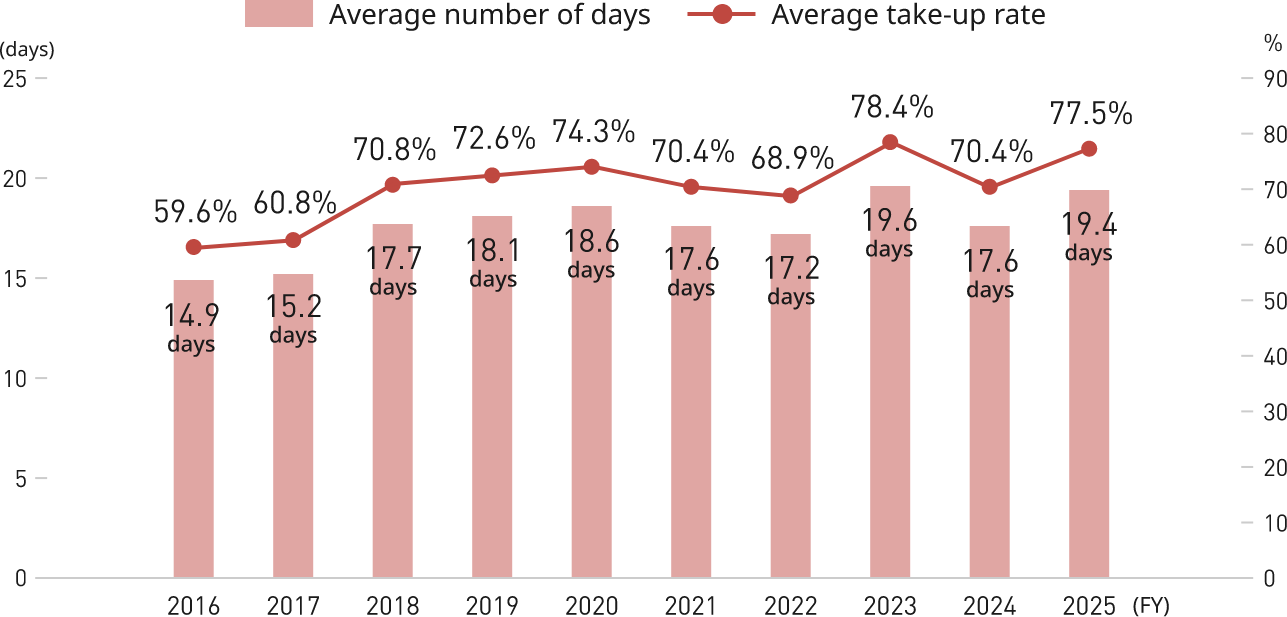
*The figures above are those including employees in managerial positions.
*Number of days of annual paid leave granted: 25 days per year.


